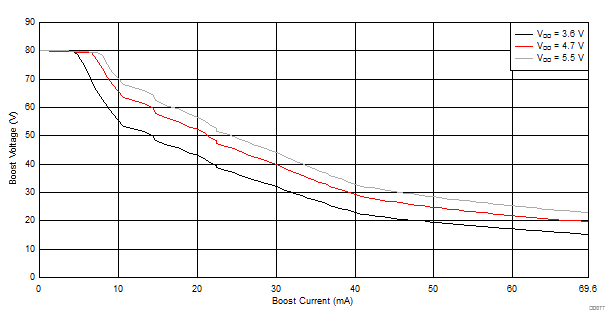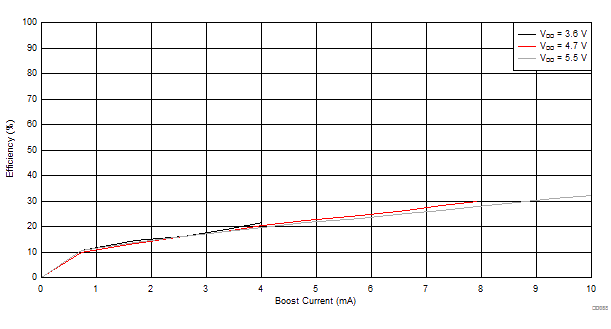SLOA198A September 2014 – December 2021 DRV2665 , DRV2667 , DRV2700 , DRV8662
- Trademarks
- 1 Boost Converter Basics
- 2 DRV8662, DRV2700, DRV2665, and DRV2667 Boost Converter
- 3 Configuring the Boost Converter
- 4 Boost Converter Output Voltage
- 5 Calculating the Load Current
- 6 Selecting an Inductor
- 7 Calculate the Maximum Boost Current
- 8 Output Capacitor Selection
- 9 Input Capacitor Selection
- 10PCB Layout
- 11Examples
- 12Revision History
11.2.3 Boost Performance Results
The actual load regulation and boost efficiency for the DRV2667EVM-CT are shown in Figure 11-5. The load regulation is a measure of the boost voltage versus the boost output current. In Figure 11-5, the voltage regulation begins to drop above approximately 10 mA of boost output current. Comparing the voltage regulation of the DRV2667EVM-CT to the DRV8662EVM, the DRV2667EVM-CT boost has much less current capacity because of the smaller inductor and current limit resistor settings.
 Figure 11-5 Boost Voltage vs Boost Current - DRV2667EVM-CT-80 V
Figure 11-5 Boost Voltage vs Boost Current - DRV2667EVM-CT-80 VThe boost efficiency is shown in Figure 11-6. The efficiency data was removed after the boost voltage decreased by more than 5 V.
 Figure 11-6 Efficiency vs Boost Current - VBST = 80 V
Figure 11-6 Efficiency vs Boost Current - VBST = 80 V